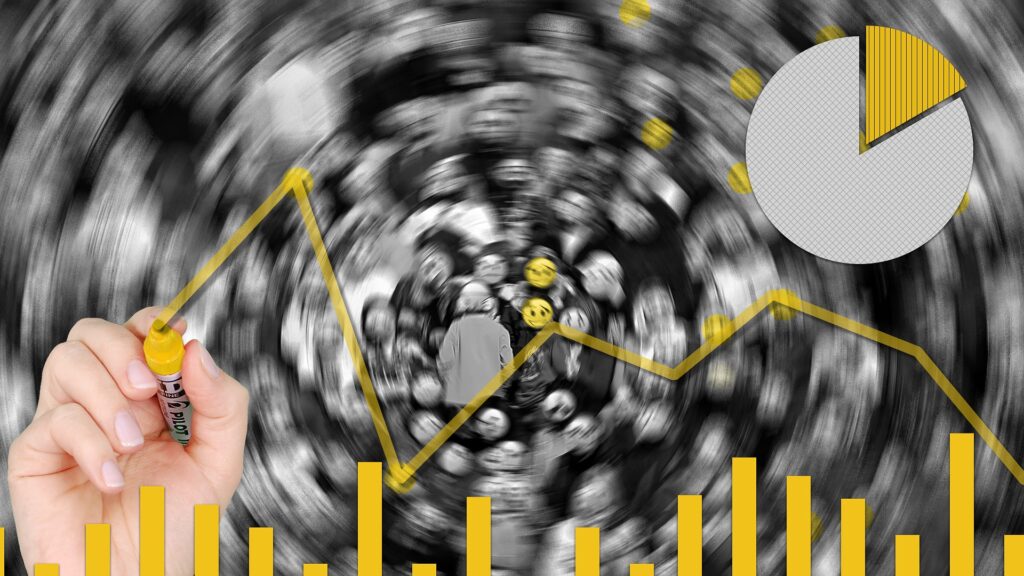By David Barton
Founder, Shenandoah Valley Group
Data has become a new best friend in business. There are so many ways to collect data and so much data to be gathered that you could literally spend all of your time mining data about anything you might find useful or interesting. But harnessing that data to make it useful is the challenge.
That’s where informatics steps in. By definition: informatics harnesses the power and possibility of digital technology to transform data and information into knowledge that people use every day.
That’s powerful. That scientific approach to data is allowing informatics to transform information systems, workflows, and problem solving across a host of industries by taking large or complex data sets and translating that data into a new way to tackle problems.
Big Data Energy
Take healthcare for example. Informatics and bioinformatics have revolutionized the way medical data can be collected and interpreted and patient care delivered. Doctors can collect highly specific data on health conditions, including diseases like cancer. Not only can they find and detect cancer, for example, they can collect data on the specific type of cancer and how a specific form of cancer responds to various available treatments and match that with biomedical data on the patient to come up with the most accurate, tailored diagnoses and treatment.
Not to get too scientific, but bioinformatics can also be used to identify genes that are associated with a particular disease. This information can then be used to develop new drugs or therapies that target those genes and lead to better treatments and even cures for diseases.
The type and amount of data that the medical industry can collect and analyze has leaped skyward in the last decade or so, allowing providers and scientists to feed multiple, complex data sets into one problem-solving system. That has led to incredible breakthroughs in medical treatments and disease control and prevention.
That same broad, but precise data collection, analysis and manipulation can also be used to create advanced approaches to all kinds of business systems.
Data and Health Benefit Management
Now take that same informatics approach and apply it to health benefit management. Let’s look at how underwriters make decisions about insurance premium rates and how that impacts an employer’s overall healthcare benefit costs, for example.
Currently there are a number of data sets that can be collected to determine the cost risks associated with insuring a particular employer group. That data can include insurance benefit use from a previous year, the number of high-dollar procedures or prescriptions needed by a group, etc.… Those data sets are delivered via standard PDF documents based on general information collected and the underwriters make their decisions on new rates at renewal.
But informatics – now easily available data mining, collection and analysis – can provide a whole new layer of sophistication and accuracy to the information underwriters can consider when deciding on premiums.
Simple data systems can be created to mine and collect additional information, including from reference-based pricing benefit models, and prescription discount programs. The more data that is collected, the more information is available to make underwriting decisions that are more accurate and fairer.
Underwriters are often making their decisions about premium rates based on worst-case scenarios that may or may not occur. They may know that an employer group has individuals that require high-dollar prescriptions for chronic conditions, but they may not know that the employer has access to a prescription discount drug program, or MAP (Medications Assistance Program), that can significantly lower the cost of those prescriptions of even get them for free.
The more data an underwriter has about real risk, the better the renewal rate. Using an informatics approach, data can be presented digitally and in real-time, leaving more of the “guestimations” behind.
More Data Benefits, Better Management
Harnessing data more effectively doesn’t just impact insurance renewal rates. Better data and information systems can also help employers better manage health benefits overall.
Health benefit management is often a disjointed process. From employee benefit renewal to individual benefit use, to benefit changes or terminations, HR managers are often managing multiple islands of information.
Informatics – and the use of information systems that connect all incoming and available benefit management data – can connect these information islands and create one seamless dashboard of information that can lead to much more effective benefits administration.
Here are some great examples of the sea change that can be made:
- Information systems can easily be created to detect when an employee is prescribed a high-dollar prescription. That prescription can create a system trigger that then prompts an automated message or email that is sent to the employee alerting them that they could be getting their prescription for less and instructing them on how to access a prescription discount program
- Using informatics, a system could be created to detect when an individual employee is about to undergo an expensive procedure. An alert would trigger an automated message letting the employee know where they could find the best care for the best price for that specific treatment – a process known as steerage.
- For HR managers who are constantly and carefully looking to avoid costly ERISA errors, a system could be put into place to detect when benefit changes or terminations are made. Each activity would produce a trigger that would create an automated response and action to make sure the benefit change or termination is accounted for and matched with the right payroll deduction or COBRA activation instantly.
Those are just a few examples of how the transformative power of informatics can be used to improve health benefit administration.
The power of data exists and as more and more industries and companies capitalize on the benefits, its time the health insurance and benefit management world got up to speed and enjoyed the same rewards.
At SVG, we have been advising companies on better ways to manage health benefits for 17 years and helping control costs and better deliver benefits. We create tailored information systems to significantly improve the way you manage benefits. If you would like to learn more grab some time on my calendar. I look forward to helping you stay educated and in the driver’s seat.
Informatics harnesses the power and possibility of digital technology to transform data and information into knowledge that people use every day.
What does Informaticist do?
The typical day of a clinical informatics specialist might include: Consulting with managers to determine the role IT plays in healthcare. Modifying and designing systems to improve workflow. Overseeing the installation of new systems that are customized for the organization.
Health informatics is the interprofessional field that studies and pursues the effective uses of biomedical data, information, and knowledge for scientific inquiry, problem-solving, decision making, motivated by efforts to improve human health. In other words, it is the science of information where the information is defined as data with meaning.

